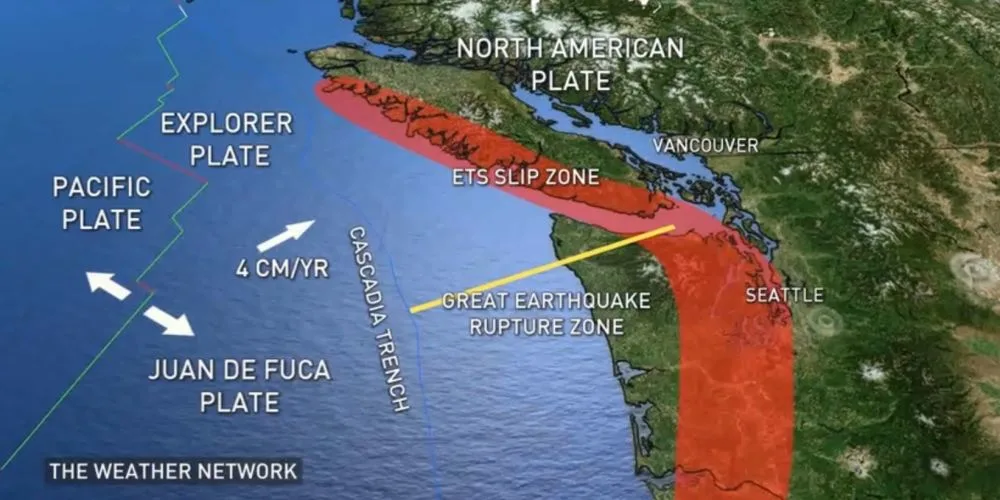
Vancouver Island might be (temporarily) changing direction
A series of microtremors have been detected, but seismologists aren't concerned or surprised
Vancouver Island may shortly be about to change direction -- in a tectonic sense, at least.
Seismologists have detected a large number of small tremors in the earth beneath the Strait of Juan de Fuca, which separates Vancouver Island from Washington State. If you live in the area, you likely wouldn't have felt anything, and although it does sound a bit alarming, and can indicate a slight increase in the risk of a significant earthquake, it's likely something else.
"These documented initial rumblings may be the beginnings of an episodic tremor and slip event (ETS), but we'll need the progression of the minuscule rumblings to continue to move north over the coming days and weeks to verify," Weather Network meteorologist and former Vancouver resident Tyler Hamilton says.
That corner of North America is part of what seismologists call the Cascadia Subduction Zone, where the smaller Juan de Fuca plate is sliding, sometimes fitfully, eastward beneath the larger North American plate. Occasionally, one plate will stick to the other, building up pressure until they then push past each other violently, causing an earthquake of varying magnitude.
ETS events differ from earthquakes in that they are a long series of slips, rather than a single, short and violent release of energy. As a side effect, they can appear to partially reverse the motion of Vancouver Island toward the mainland.
"The ETS bucks the trend – throughout the year, normally Vancouver Island is moving towards the Lower Mainland (shortening your ferry crossing ever so slightly)," Hamilton explains. "But, this incredible reversal only occurs for just a few weeks, and it's important to keep in mind, we're talking about very small shifts, measured in millimeters."
Hamilton says ETS events usually happen every 15 months or so, with the tiny shaking events gradually shifting northward up the spine of Vancouver Island, and they are, on their own, typically nothing to worry about.
"Keep it mind, this is a well documented event, and is constantly being studied, so sleep easy knowing that experts continue to actively pursue and further understand the complexities under the earth's crust," Hamilton says.












